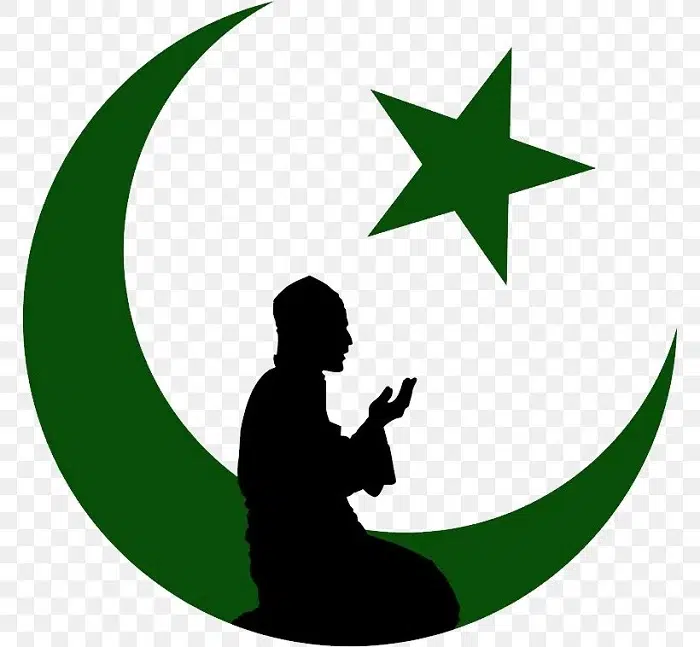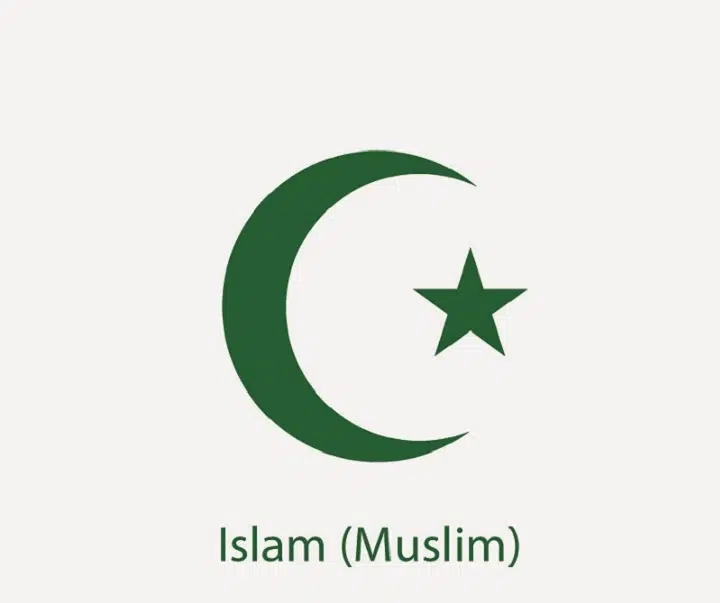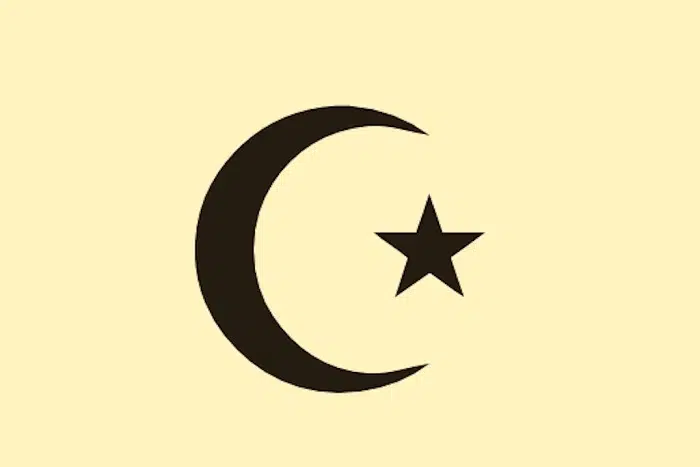When we talk about religious symbols, few are as instantly recognizable as the Muslim symbol—the crescent moon and star. Though not mentioned in the Quran, this emblem has become widely associated with Islam due to its deep cultural, historical, and political roots. From mosques and national flags to jewelry and architecture, the crescent and star serve as a visual representation of Muslim identity across the world.
What Is the Muslim Symbol?

The Muslim symbol, typically represented as a crescent moon paired with a five-pointed star, is most commonly used to denote Islamic culture and religious heritage. It is often seen on:
- Mosque domes and minarets
- National flags (e.g., Turkey, Pakistan, Algeria)
- Islamic art and manuscripts
- Cultural apparel and accessories
While the crescent and star are the most recognized, they are not official religious symbols ordained by Islamic doctrine.
Historical Origins of the Crescent and Star
The crescent moon and star have a rich history that predates Islam. They were symbols used in the ancient Middle East and Mediterranean regions long before the advent of the religion in the 7th century.
Pre-Islamic Usage
- Ancient Mesopotamians and Greeks used the crescent moon to symbolize lunar deities.
- The star was commonly associated with Venus, often symbolizing guidance or divinity.
- The symbol was adopted by the city of Byzantium (later Constantinople, now Istanbul) as early as 300 BCE.
Adoption in the Islamic World
When the Ottoman Empire rose to power in the 14th century, it adopted the crescent and star as imperial emblems. Over time, these elements came to be associated with Islamic identity due to the empire’s prominence and influence across the Muslim world.
Symbolic Meaning in Islamic Context
Though not based in religious scripture, the Muslim symbol has taken on various symbolic meanings in the Islamic world:
- Crescent Moon: Often signifies progress, new beginnings, and the Islamic calendar, which is lunar-based.
- Five-Pointed Star: Sometimes interpreted as representing the Five Pillars of Islam—faith, prayer, charity, fasting, and pilgrimage.
It’s important to note that the interpretations can vary, and many Muslims do not consider the crescent and star as religious symbols in the traditional sense.
Muslim Symbol in Modern Flags and Nations
The crescent and star appear on several national flags of Muslim-majority countries, reinforcing the association between this symbol and Islamic identity.
Countries Using the Muslim Symbol on Their Flags
- Turkey: Red background with a white crescent and star, reflecting the Ottoman legacy.
- Pakistan: Green field with a white crescent and star, symbolizing Islamic faith and unity.
- Tunisia and Algeria: Also feature the emblem, tied to Islamic heritage and national identity.
- Maldives, Mauritania, and others: Use variations of the crescent and star for similar reasons.
These uses are primarily cultural and political, not strictly religious.
Misconceptions About the Muslim Symbol
There are several misconceptions surrounding the Muslim symbol, largely due to its widespread use and adoption in various contexts.
It’s Not from the Quran
Nowhere in the Quran is the crescent moon or star mentioned as a religious symbol. Islam traditionally emphasizes aniconism, the avoidance of symbolic images in worship.
It’s Not Universal
Not all Muslims accept or use the symbol. For instance, Wahhabi and Salafi groups avoid using it altogether. Some Islamic scholars argue against using any icons, as they believe it conflicts with the monotheistic focus of Islam.
Other Symbols in Islamic Culture
While the crescent and star dominate the public imagination, there are other symbols and motifs used in Islamic art and culture:
- Arabic Calligraphy: Often featuring verses from the Quran or names of Allah.
- Geometric Patterns: Representing the infinite nature of God.
- The Shahada (Declaration of Faith): Sometimes depicted in text as a symbolic expression of belief.
These elements are more spiritually grounded and often appear in religious and sacred spaces.
Cultural and Religious Balance
The debate over the crescent and star reflects a broader conversation about religion and culture in the Muslim world. For many, the symbol is a cultural artifact—rich in history and tradition. For others, especially purists, it has no place in a religion that values direct connection with the divine over intermediaries or icons.
The Muslim Symbol in Art and Jewelry
Modern designers and artists often incorporate the crescent and star into contemporary Islamic art, fashion, and jewelry. These are used not only for religious expression but also as cultural and aesthetic symbols:
- Crescent moon necklaces
- Islamic calligraphy mixed with crescent/star shapes
- Decorative motifs on home décor items
These products are especially popular during religious holidays like Eid and Ramadan.
FAQs About the Muslim Symbol
What is the main Muslim symbol?
The crescent moon and five-pointed star are the most recognized symbols associated with Islam, though they are not religiously mandated.
Is the crescent moon an Islamic symbol?
It is a cultural symbol widely associated with Islam due to the Ottoman Empire, but it is not mentioned in the Quran.
Do all Muslims accept the crescent and star?
No. Some Islamic sects and scholars reject symbolic representations entirely, considering them un-Islamic.
Why is the Muslim calendar based on the moon?
Islam follows a lunar calendar, which is why the moon plays a significant role in Islamic rituals and holidays.
Which countries use the Muslim symbol in their flag?
Countries like Turkey, Pakistan, Algeria, Tunisia, and Mauritania feature the crescent and star on their national flags.
The Muslim symbol, while not rooted in Islamic scripture, plays a powerful role in representing Muslim culture, history, and identity. The crescent and star, born from pre-Islamic civilizations and adopted through empires like the Ottomans, have come to embody a blend of faith, tradition, and political heritage. While not universally accepted by all Muslims, the symbol’s continued use in flags, mosques, jewelry, and art confirms its significance in shaping a visual identity for the Islamic world.


